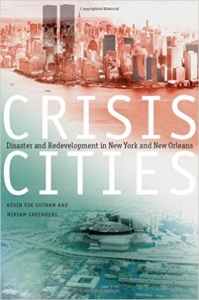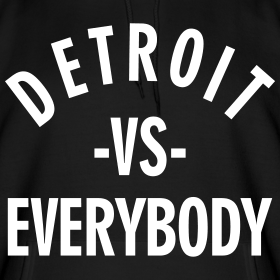It’s difficult to talk about disasters in part because we can’t control them. But it’s crazy to think in a moment, a city that millions call home can be altered forever. This was true for New York after 9/11 and for New Orleans post-Hurricane Katrina. And it has been true for cities hit by fires, earthquakes, and attacks throughout urban history. From a planning perspective, it’s intriguing to look at how affected cities recover from disaster, and how resources are distributed.
 I recently started reading a book by Gotham and Greenberg called “Crisis Cities” that looks at how redevelopment coalitions sought to capitalize on neighborhoods in New Orleans and New York following their respective disasters. They basically argue that disaster relief is far more complicated than a charitable response to a national crisis. It is part of a much larger story, one rooted in inequitable development that leaves lower-income communities disproportionately affected. In the case of New Orleans, the story follows the Lower Ninth Ward and Lakeview, and in New York it follows Chinatown and the “New” Lower Manhattan.
I recently started reading a book by Gotham and Greenberg called “Crisis Cities” that looks at how redevelopment coalitions sought to capitalize on neighborhoods in New Orleans and New York following their respective disasters. They basically argue that disaster relief is far more complicated than a charitable response to a national crisis. It is part of a much larger story, one rooted in inequitable development that leaves lower-income communities disproportionately affected. In the case of New Orleans, the story follows the Lower Ninth Ward and Lakeview, and in New York it follows Chinatown and the “New” Lower Manhattan.
Gotham and Greenberg show how market-centered redevelopment takes advantage of the host of tax incentives, abatements, and CDFIs available post-disaster to push through development in affected areas. Development that is intended for the “public benefit” is privatized, and city rebranding campaigns are used as powerful tools to attract business and tourism.
I’m not writing about this to geek out over a book I’m reading (well maybe a little). I’m interested in the concept of what Gotham and Greenberg call disaster capitalism because Detroit, a city with shockingly similar redevelopment and branding, did not decline overnight. It wasn’t hit by the impact of a plane or by the devastation of a storm.
But Detroit did experience the largest municipal bankruptcy in history, and in many ways the impact has been similarly devastating, especially for the low-income communities that have endured the city’s decline since the mid 20th century. Gradual demographic and economic shifts can be traced to things like industrialization, post-war suburbanization, and a variety of local and regional policies affecting housing, employment, and education.
And as more and more people acknowledge the city’s “rebirth” and “revitalization”, similar branding tools have emerged to attract investment and human capital. Countless slogans and products from “Say Nice Things About Detroit” and “Detroit Hustles Harder” to “Detroit vs. Everybody” and “Detroit is the New Black” reflect the city’s resilience and rebranding. As I walked passed the baggage claim at the airport yesterday after a family vacation, the monitor greeted visitors with “Welcome to Detroit, America’s Great Comeback City”.
There is nothing wrong with celebrating Detroit’s “comeback”. That pride and resilience is part of what I love about this city. But don’t just celebrate the fact that investment and development are happening, notice who is investing, what are they developing, and who are they doing it for.

